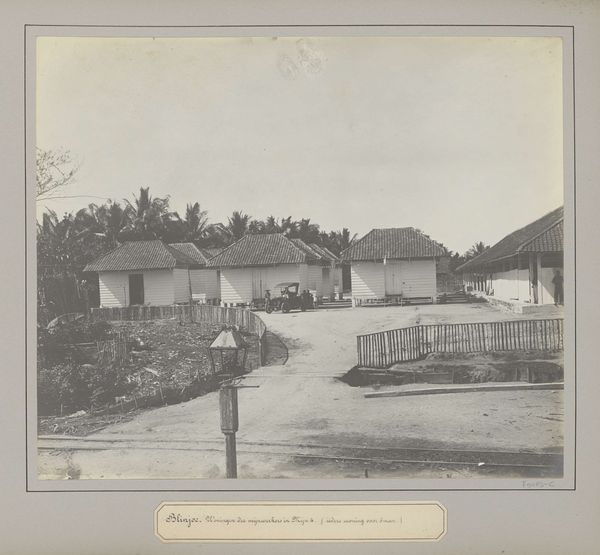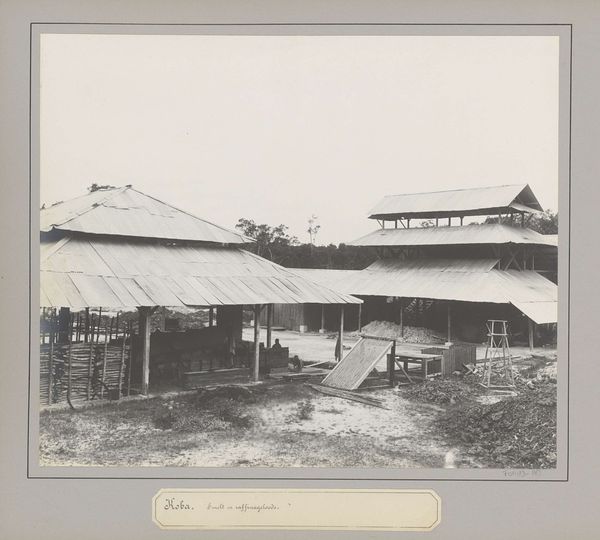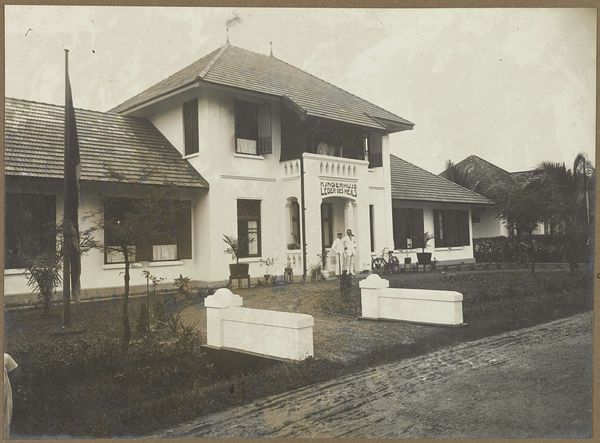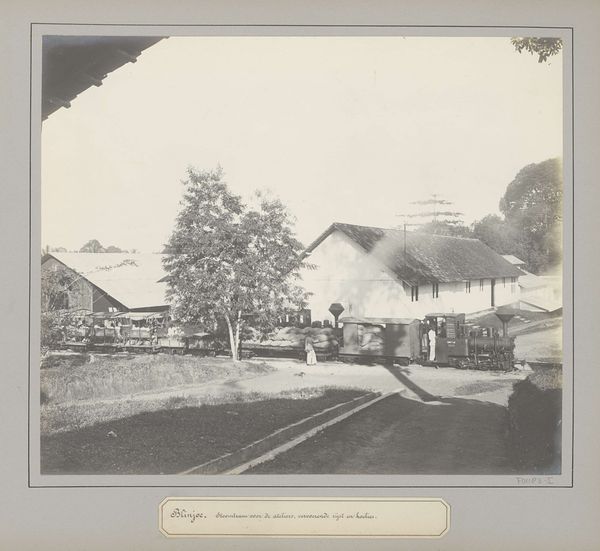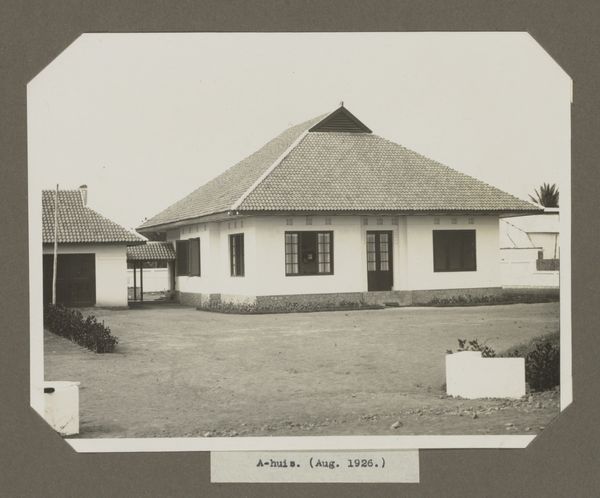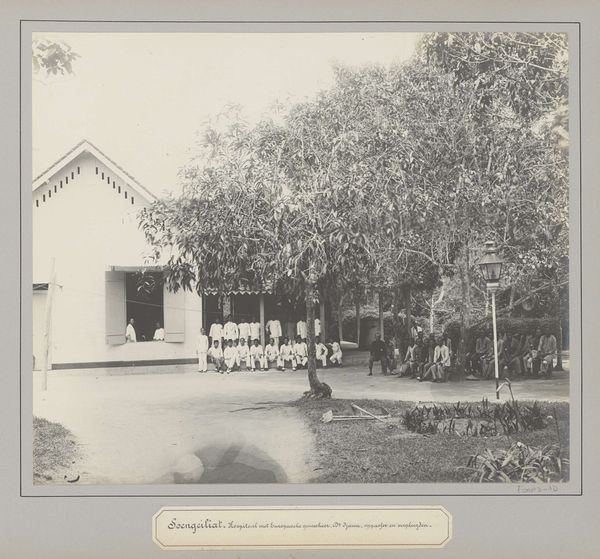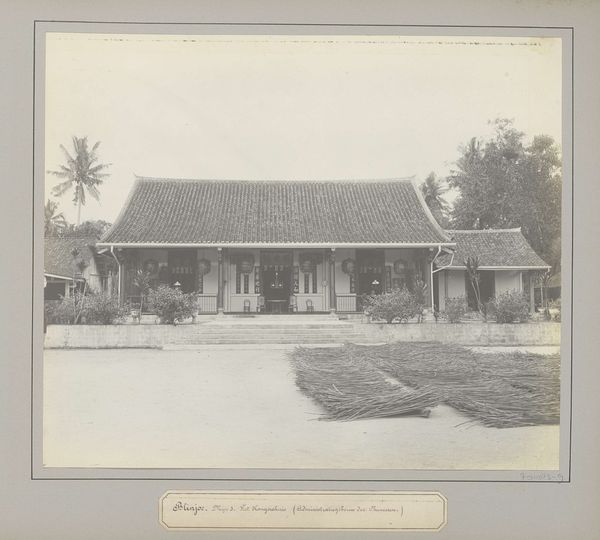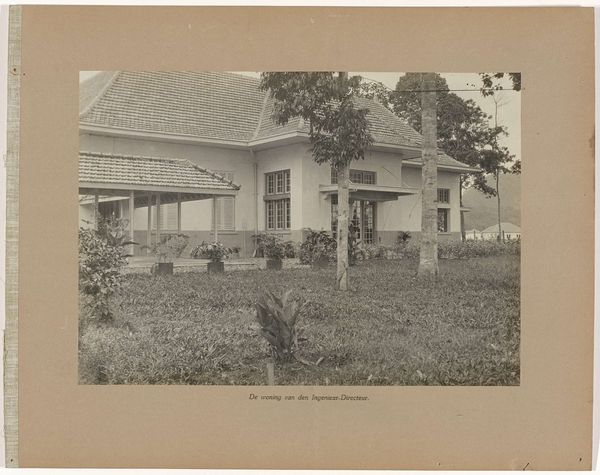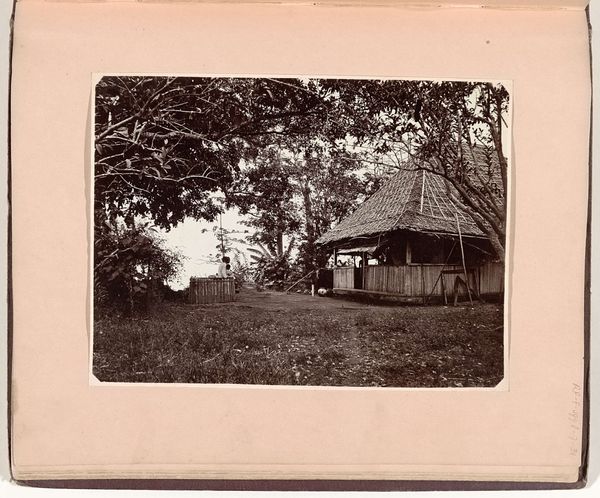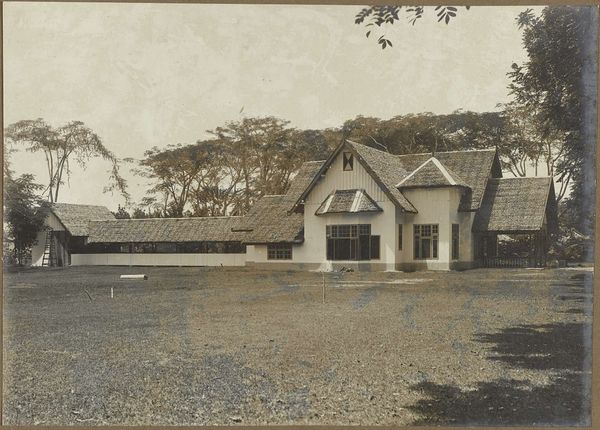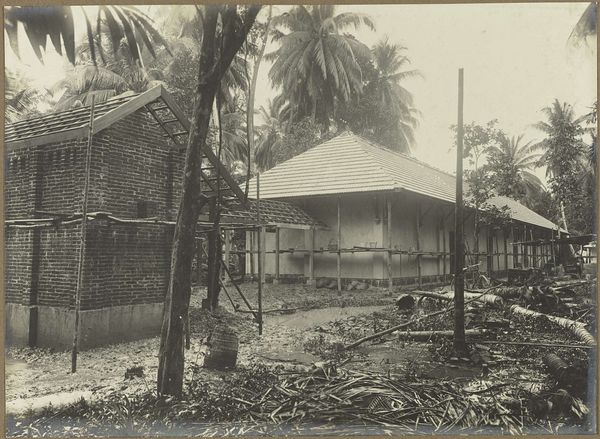
Mannen op de veranda van het Gouvernementsziekenhuis voor mijnwerkers te Belinyu c. 1900 - 1920
0:00
0:00
photography
#
landscape
#
indigenism
#
photography
#
orientalism
#
genre-painting
Dimensions: height 239 mm, width 285 mm
Copyright: Rijks Museum: Open Domain
Editor: This is an early photograph, titled "Mannen op de veranda van het Gouvernementsziekenhuis voor mijnwerkers te Belinyu," placing it around 1900 to 1920. It shows a government hospital in Indonesia, probably in Belinyu. There’s a somber tone to the picture; the light and shadows seem to highlight the rigid architectural design of the building. How do you interpret the historical and social narratives within this seemingly simple scene? Curator: The image's strength lies in its depiction of colonial structures, literally and figuratively. The hospital, intended as a benevolent institution, simultaneously signifies colonial power and resource exploitation. The presence of the "mijnwerkers," or mine workers, hints at forced labor and extraction of resources. How does this image speak to the dynamics of orientalism? Editor: Well, I suppose the architecture and the composition might be romanticizing or exoticizing the location… It does seem to enforce a visual power dynamic between the colonizer and the colonized. Do you see elements of resistance in this image? Curator: That's a sharp insight. While explicit resistance is absent, the very act of documenting these men – allowing them a presence in visual culture – can be seen as a form of defiance. Do you notice anything specific about how they present themselves or their relationship to the space? This might subtly subvert colonial narratives. What’s your take on that? Editor: Now that you mention it, they appear more casual than how they might be portrayed. There's a sense of them inhabiting the space rather than just being subjects *within* it. Curator: Precisely. The image operates on multiple levels – reinforcing colonial power through its subject matter yet providing glimpses of agency and humanity. Considering the role of photography itself as a tool of colonial documentation and control is crucial, no? Editor: Absolutely. I didn’t initially see beyond the surface level depiction. It is more complicated than just a simple snapshot of a hospital, it reveals so much about the political landscape. Curator: Agreed. By questioning what we see and understanding its multifaceted contexts, we unearth layers of history embedded within seemingly ordinary visuals.
Comments
No comments
Be the first to comment and join the conversation on the ultimate creative platform.
